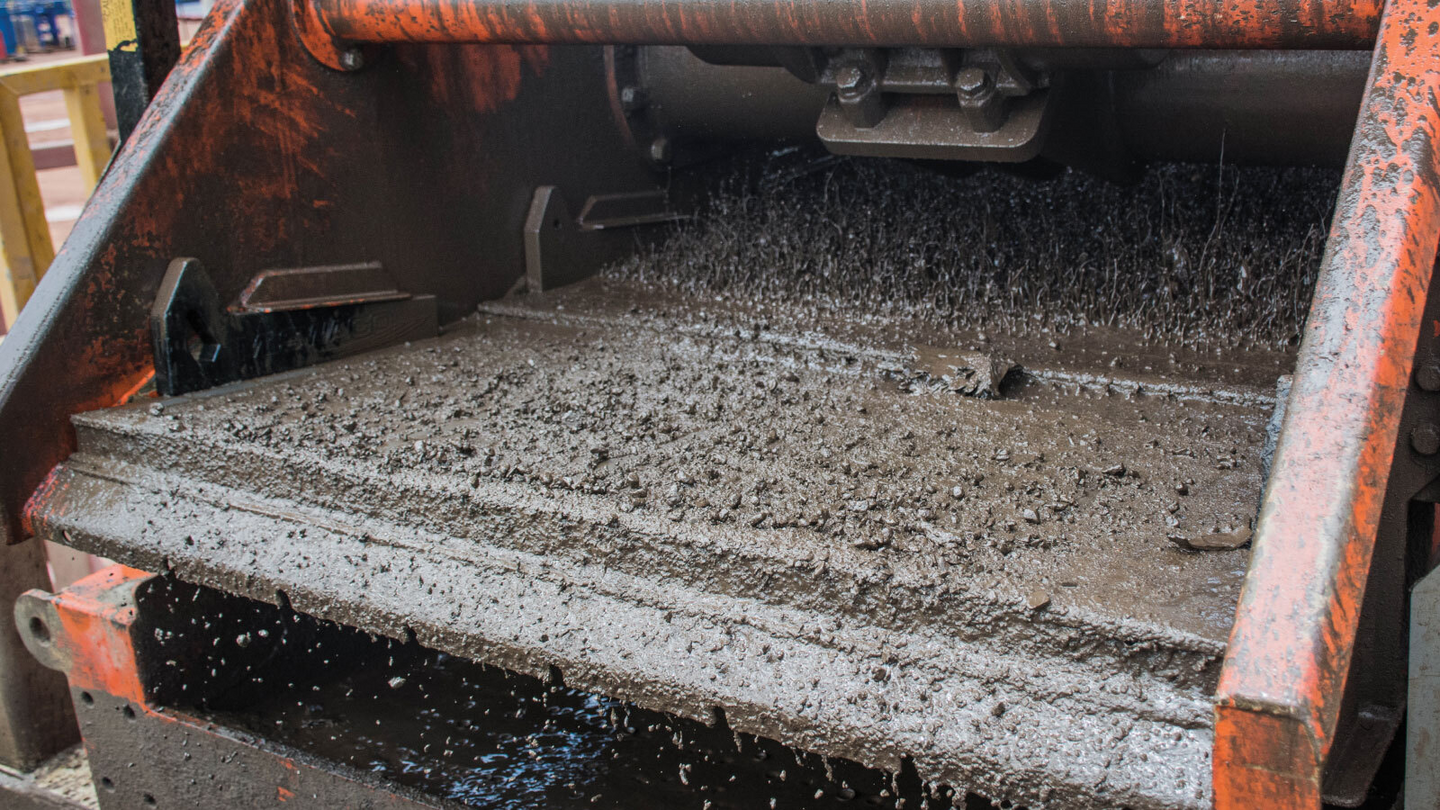 Search
Search
 Search
Search

BaraXcel NAF helps operator drill well in record time and under budget
Download PDFMature Fields

Help operator meet production targets in a reservoir with drilling issues

Central North Sea, United Kingdom
Existing wells in a UK Central North Sea field were underperforming. and production targets set for the field were not being met; a new oil producer was required to be drilled to meet these targets. This new well was expected to produce enough oil to sustain the floating production storage and offloading (FPSO) unit and extend the life of the field. Planning for the new well included addressing a series of drilling issues, along with switching from a gravel-pack compliant expandable completion to a stand-alone screen (SAS) completion.
Significant drilling issues had been encountered on offset wells: reactive clays above the reservoir previously caused pack-offs, stuck pipe and sidetracks. The pore pressure/fracture gradient (PP/FG) margin was predicted to be very narrow, so a low equivalent circulating density (ECD) had to be maintained across a wide temperature spectrum. In addition, the decision was made to change the completion from a gravel-pack to a stand-alone screen completion by using the Halliburton PetroGuard® advanced mesh screen system. This required an engineered reservoir drill-in fluid (RDIF) that would minimize formation damage and prevent plugging the screen with bridging material.
When the well reached total depth (TD), the RDIF would be required to meet the production screen test (PST) specification. The PST—which determines a fluid’s ability to flow through the production screen—was a new operation in this field. With this target in mind, the decision was made to use BaraMesh® shaker screens. Minimizing the low gravity solids (LGS) content of the RDIF throughout the reservoir drilling operation would make it easier to meet the PST specification at TD.
Once the fluid met PST specification and the SAS had been installed, a packer would be set prior to running the upper completion in the 9 5⁄8-inch casing. With this in place, the wellbore would be displaced from the RDIF to a 9.2-ppg NaCl brine via a customized displacement pill train designed to meet a final cleanliness specification of 0.05 percent solids. In addition, the operator expressed a desire to minimize the volume of waste fluid resulting from the interface of the two fluids and any residual RDIF inside the casing.
A low-ECD BaraXcel™ non-aqueous fluid (NAF) was selected for drilling the reservoir and installing the screens. High-density calcium bromide brine was used for the internal phase to help reduce solids loading, control ECD and provide effective clay inhibition against interbedded shales in the reservoir. The BaraXcel system would also provide excellent lubricity in the high-angle sections of the wellbore.
The system exhibited a return permeability value of 98 percent during lab testing under simulated field conditions. This indicated that the fluid would meet the overall objective of minimizing formation damage, bridging the 42-micron sands while ensuring that the particles were small enough to pass through the 150-micron sand screen.
The BaraXcel system was formulated with two sized bridging agents. The acid-soluble BARACARB® 5 and 25-micron ground marble additions provided density, along with the bridging function. This bridging/LCM package was maintained throughout the reservoir section to establish sealing across the largest reservoir pore throats while retaining unrestricted flow through the 150-micron production screens. To ensure that the fluid performance was optimized, the BaraMesh shaker screen mesh sizes were selected based on several factors: the formation types that would be drilled, the expected drilled solids particle size distribution (PSD), and the optimal removal of drilled solids in order to prevent buildup in the active fluid. Mud engineers constantly monitored the screen performance and ensured that new screens of the appropriate mesh size were readily available in the shaker house.
The wellbore cleanout was designed based on laboratory testing to select the appropriate chemical cleaner, along with hydraulic modeling performed using CFG™ completion fluids graphics software from Baroid to ensure that the pump schedule and flow rate could be fully optimized. These two parameters were key to getting the design right, since achieving minimum annular velocities of 150 feet (46 meters) per minute are required to maximize cleaning performance. The customized wellbore cleanout train was composed of a base oil pill, a viscous push pill and a BaraKlean® 648 casing cleaner surfactant pill, followed by the NaCl brine.
BaraKlean 648 casing cleaner provides strong cleaning and wetting actions to break and disperse mud film and residue. Extensive lab testing was performed to determine the optimal surfactant concentration and prevent the formation of emulsion between the RDIF and NaCl brine.
Stuck pipe and sidetrack
Under budget on screen costs
USD saved
The BaraXcel fluid system effectively bridged the 42-micron sands. The BaraMesh shaker screens performed well to remove any excess LGS while drilling this interval – therefore, helping with screening the fluid to PST specification: the RDIF was screened to specification within 4 hours. The fluid passed the PST requirements with three separate 1-liter samples flowing through a 150-micron screen back to back with the time taken for the fluid to pass through remaining within one second of each other. This indicated that the fluid was able to flow through the screens without solids blocking the fine mesh.
Using the same fluid to drill the reservoir and run the screens saved both the time and cost of a displacement operation. The SAS completion was installed successfully. The well was flowed through a restricted choke, and initial performance looked promising with 11,000 bopd. However, when the well was hooked up to the FPSO unit and brought online, production decreased. A remedial acid job was executed from a vessel tied into the subsea tree, and the well production increased to levels even higher than the original cleanup back to the rig. Since acid-soluble solids were used in the BaraXcel formulation, the remedial acid job was effective. Production met with the expectation for this well, proving that the acid-soluble BaraXcel system performed well in tandem with the acid treatment.
The well was drilled faster than any other well in the field, for less than the planned budget. It was also the first well in the field to reach total depth with zero stuck pipe and no sidetrack required. Implementing both the BaraXcel RDIF and the PetroGuard mesh screen system saved an estimated USD 1.3 million as compared with the prior gravel-pack completions.
The implementation of the new completion program increased hydrocarbon output and made the field development economically viable against challenging commodity prices.
Additional economic benefits were gained through the synergies of the RDIF, BaraMesh screens and optimized WBCO.
The operator plans to continue these strategies on upcoming wells due to the overall success of the operation.
